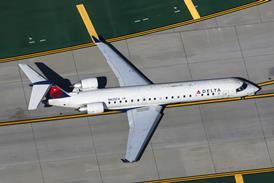Chris Tarry takes time out to consider whether carriers are well-equipped to tackle the consolidation needed in the world's more mature markets
The summer vacation is a traditional time to take time out and reflect on life. So perhaps it is appropriate to ponder the bigger issues shaping the airline industry - in particular where it now stands in terms of consolidation.
In at least one respect, the airline industry displays similarities with other industries - it matures over time. And also, in common with other industry life cycles, there are a number of marked differences apparent in corporate behaviour as maturity approaches. At one end of the spectrum consolidation will allow some to look to increase their market presence. At the opposite end, for others the obvious conclusion will be to exit the market.
It is true that there has already been a degree of consolidation and also that some airlines have failed - most notably, of late, Swissair and Sabena. There has been merger and acquisition activity too, although outside the USA this has been more of an exercise in sweeping up smaller or regional airlines to build scale in a home market. Overall, however, the airline business is left looking like an industry where there is free entry but no free exit.
There are also onlookers who argue that the provision of US Chapter 11 bankruptcy protection in the last crisis and the federal loans made this time around in the wake of 11 September provide a further impediment to a natural process of self-correction through exit. Against a background where, for many airlines, the recovery in traffic appears to have stalled, despite the fare initiatives, it is timely to consider the issues of maturity, change and indeed re-invention.
It is possible to measure the extent of industry maturity by the number of players at any particular point along its life-cycle curve. The duration of the life cycle is clearly dependent upon the industry in question and the very nature of the business. The life cycle for mobile telecoms is quite different from that of steel or indeed air transport. Economics textbooks also tell us that the degree of concentration in an industry is a reflection of the nature of competition.
Obviously, not all of the airline industry is equally mature. That is certainly true in terms of a standard geographical split. Much of the US market would appear to be already mature, with the North Atlantic sector getting close to maturity for players on both sides. Conversely, markets to, from and within Asia tend to be at a relatively early stage of development. Even within a geographical market, some players may be more mature than others. So even within mature North America, low-cost carriers such as JetBlue are still developing.
So, although the supposed need for consolidation in the airline industry is an oft-stated mantra among some airline executives, this raises the fundamental question of where the benefit might arise if indeed cross-border mergers were allowed. Is big indeed beautiful? And if it is, then for whom?
The nature of competition and regulation means that the incremental revenue gains from a merger could simply be the result of redistributing traffic around the combined network. While putting together two airlines will increase reported revenue, the acid test is whether the revenue of the combined business can be grown faster and more profitably than for the individual airlines alone. The far greater opportunity is on the cost side - a key driver behind consolidation across all industries.
As the airline industry matures, in terms of markets and players, there is increasing evidence of what may be described as structural rigidity in the system. Where this exists it will clearly constrain the ability of airline managers to make rapid and permanent cost savings. Cost reduction is a hard task even within an existing company, especially given the constraints of national labour laws. But to cut costs successfully after a cross-border merger and under a different labour jurisdiction would seem to raise a whole raft of additional and daunting issues.
It is all very well to talk about consolidation, but it will only make sense if there is real gain to be seen by shareholders and there is confidence that the merged group can deliver on the benefits that were promised as part of the transaction. Even before the current turmoil in the stock markets it was clear that investors want tangible signs and not just "investment stories".
An emerging problem for the industry is that if there is no sign of improvement in the overall economics of the business, and for a number of airlines in particular, then the providers of capital could decide to demand reassurances before providing funding. Or they may simply remain on the sidelines.
In such an environment, finding the financing to change a business, let alone grow it, would become even more "challenging" than usual.
So while many airlines desperately need to change it may not be possible for them to deliver on that need. Only time will tell. Until then try to have a relaxing holiday.
Source: Airline Business























